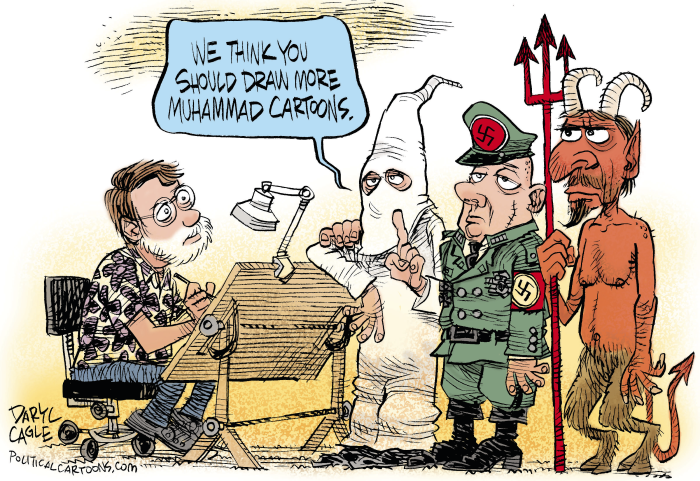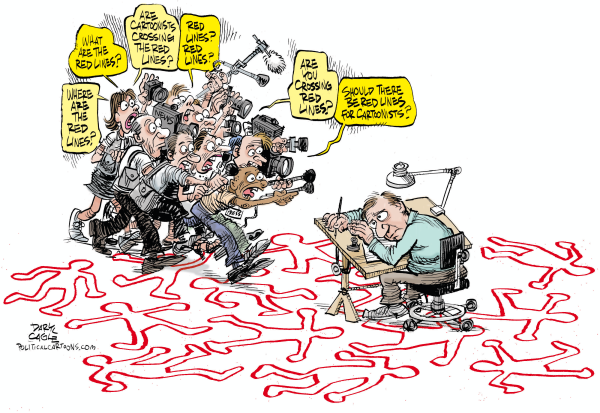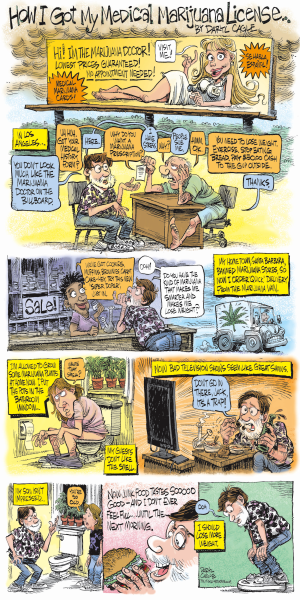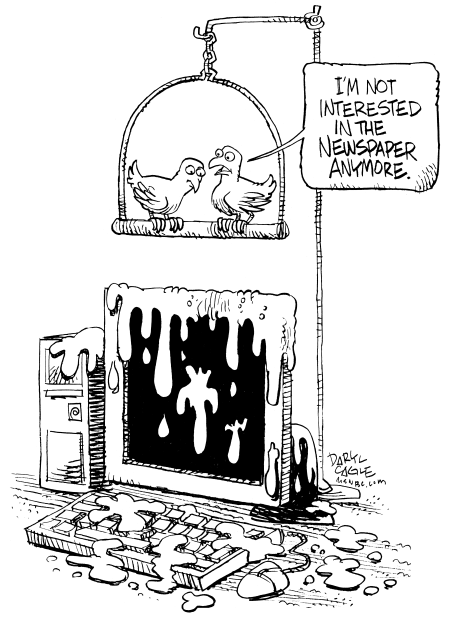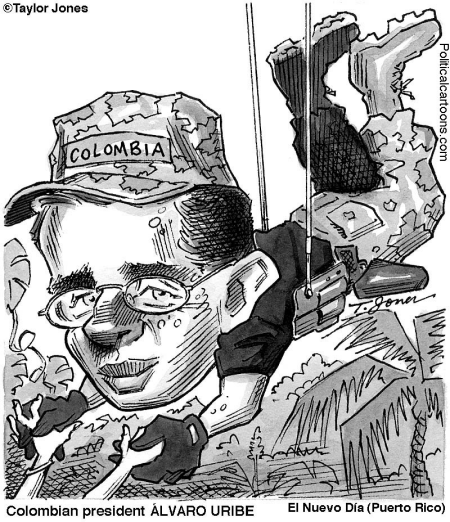
These are tough times for political cartoonists as newspapers cut back. Cartoonists are still widely syndicated in newspapers across the country, but national syndication pays a fraction of what cartoonists made from traditional staff jobs, making them an endangered species as cartoonists lose their jobs.
The irony is that political cartoons are more popular than ever; cartoons spread quickly across social networks, look great on tablets and smart phones, and reach millions of readers through syndication. Editorial cartoons are part of state-mandated testing in 8th and 11th grade, and are a part of the weekly homework for millions of students in America.
In recent years the number of editorial cartoonists has declined by half, to about 60. One of the best is Bill Day, who drew for decades for The Commercial Appeal in Memphis, and before that the Detroit Free Press. Bill has a room full of trophies from a storied career as an editorial cartoonist, winning almost every prize a political cartoonist can win. Bill’s cartoons are syndicated to half of the newspapers in America, but there is little money to be made from syndication as newspapers pay pennies a day for cartoons.
When he was laid off from his newspaper, Bill went to work for Federal Express, lifting heavy boxes, until that was too much for his back. Bill now works every day in a bike shop; he draws his cartoons at night; he is in danger of losing his house and faces the tough choice of retiring from his long career in editorial cartooning — ironically, at a time when more readers than ever are reading his work.
Editorial cartoonists are no different from newsroom journalists, who have been losing their jobs in the same proportion as newspapers cut back. We know that journalism will continue to be important in the future, but we don’t know what form the business will take, as unemployed journalists now work as freelancers and bloggers; the same is true with editorial cartoonists, but since there are so few cartoonists the cuts threaten the viability of the profession. We may soon face a time when there are only a dozen political cartoonists left, and editorial pages will be like McDonald’s, with everyone in the world choosing their dinner from a handful of choices on the same, bland menu.
You can help stop the decline of our profession, stop the bleeding and preserve the public debate by saving one important voice at this important time. You can keep Bill Day working, and we’ll make sure that his work continues to be seen by millions of readers in syndication.
We’re doing a crowd-funding campaign at www.indiegogo.com/billday to raise $35,000, to be paid as a salary to Bill to draw four editorial cartoons a week, every week, for an entire year, as if he was working for a newspaper. That’s a total of 208 cartoons, covering everything from the presidential election to Wall Street and our corrupt political system. If we’re able to raise more we will keep Bill working longer. All donated funds will be kept in a segregated fund, only for Bill’s salary. Bill will send his original drawings as premium gifts to contributors, and will sign prints and send e-books to fans who donate in smaller amounts.
Our unique American art-form needs you. Bill needs you. Please, save our editorial cartooning profession, save Bill and keep an important, progressive voice in the public debate by donating to keep Bill drawing for the next year and beyond.
CLICK HERE TO CONTRIBUTE AT WWW.INDIEGOGO.COM/BILLDAY
—–
Daryl Cagle runs the CagleCartoons.com newspaper syndicate distributing editorial cartoons to more than 850 newspapers around the world including the paper you are reading now; he is a past president of the National Cartoonists Society. Comments to Daryl may be sent to [email protected]. Read Daryl’s blog at www.cagle.com/daryl.



